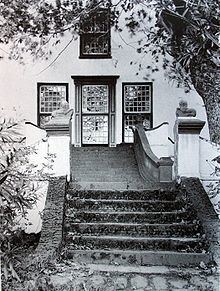Name Arthur Elliott Role Photographer | Plays The Better 'Ole | |
 | ||
Books A Cape Camera: The Architectural Beauty of the Old Cape : Photographs from the Arthur Elliott Collection in the Cape Archives | ||
Arthur Elliott (1870, New York City – 20 November 1938, Cape Town), was a South African photographer who recorded the passing scene at the Cape. His love of Cape Dutch architecture is expressed in some 10,000 photographs of considerable artistic and historic merit, creating an unrivalled pictorial record of early 20th century buildings at the Cape.
Elliott was orphaned when 12 years old and lived in Scotland before finding his way to South Africa at the age of 20. He tried his hand at various jobs such as scene-painter and production manager at the Luscombe Searelle Acting Company in Johannesburg.
He ended up in Cape Town as a war refugee in 1900 and took to photography which became a life passion. His home in Cape Town is commemorated by a plaque at 134 Long Street – the address where he led a frugal bachelor's existence and worked for 32 years. He had a number of major exhibitions in Cape Town – in 1910, 1913 (with a catalogue compiled by Theal and F. K. Kendall's article on Cape architecture), 1926 (with an introduction by Sir George Cory, the historian), 1930 (arranged by W. R. Morrison) and finally in 1938. These exhibitions gave him widespread recognition and enabled him to eke out a living through the selling of prints.
Elliott seems to have been determined to record as much as he was able of the old farmhouses, buildings and streets that were rapidly disappearing with the ever-growing pressure to modernise. He had an almost infallible eye for the essential elements that made up a good architectural image.
Elliott's photographs have proved an invaluable source of information for historians and architects. During his lifetime only a portfolio of some of his images was published for the use of schools, but in 1969 a selection of his best images, showing farmsteads and historic buildings, was published by Hans Fransen. Shortly before his death in 1938, Elliott offered his entire collection to the Government for ₤5,000 – an offer which was refused. After his death the entire collection was acquired by the Government for a fraction of Elliott's asking price and presented to the Cape Archives. A further 1,000 photographs from the collection of W. R. Morrison were added later. The Elliott Collection, as his set of images came to be called, has been used extensively by authors writing about all aspects of old Cape architecture. Some of these works appeared during Elliott's lifetime, but most were published after his death.
